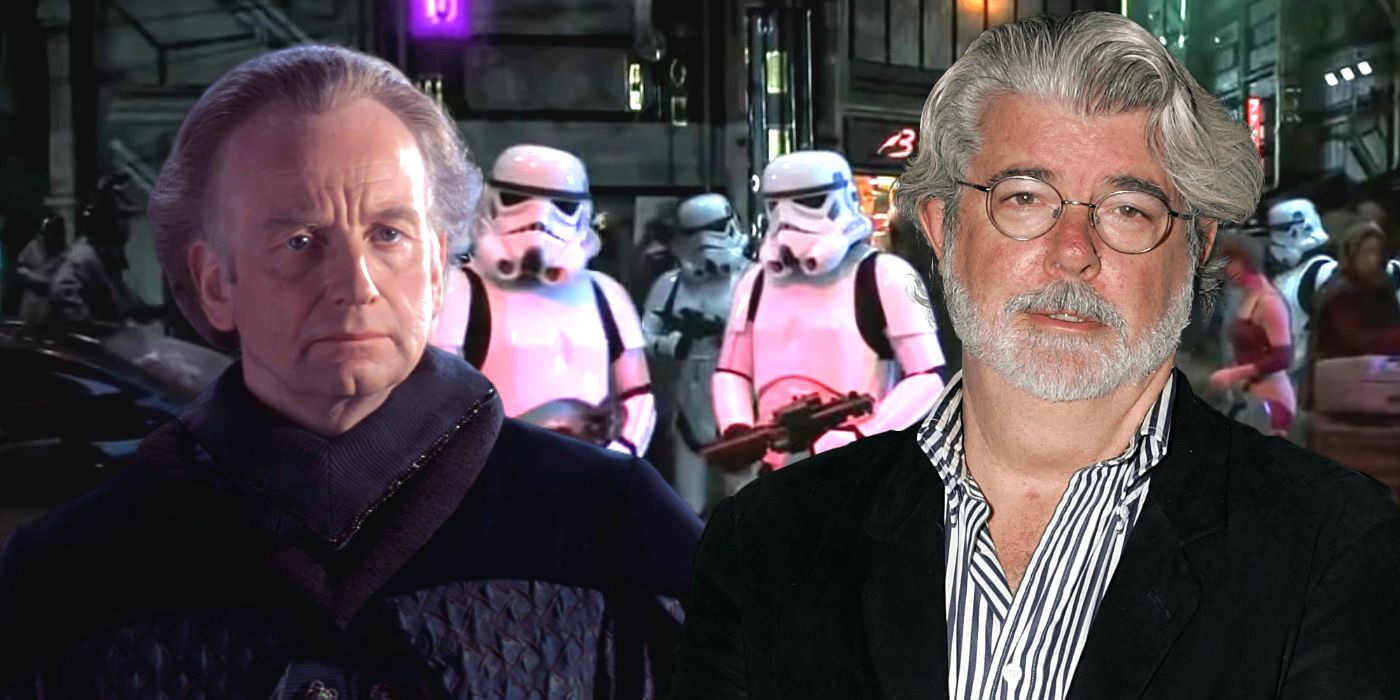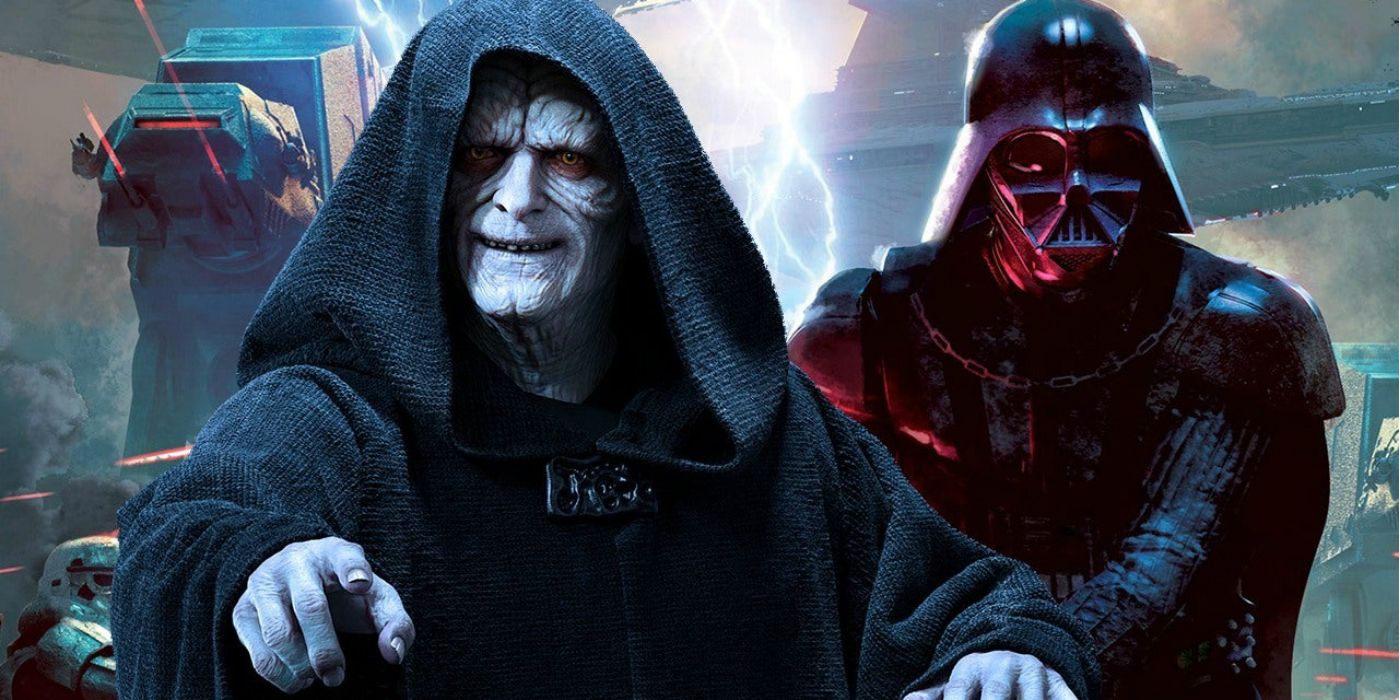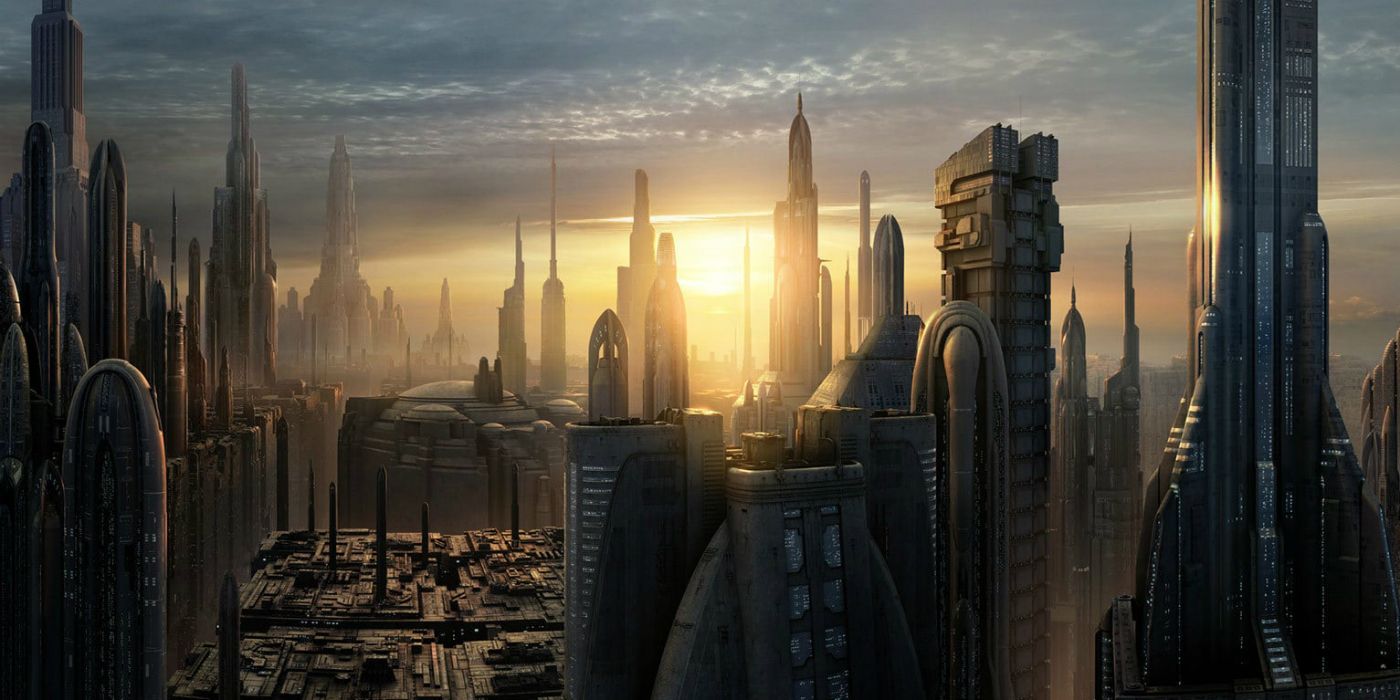
George Lucas' canceled Star Wars TV show, Star Wars Underworld, would have kept the prequels alive. Back in 2005, George Lucas used Star Wars Celebration III as the opportunity to make a thrilling announcement. He revealed he was planning to make a big-budget, live-action Star Wars TV series. The show had the working title of Star Wars Underworld.
Sadly, this project never happened. Scripts were commissioned, but the production proved too expensive, and it was eventually shelved. Over the years, details have leaked, confirming that Star Wars Underworld would have been set on Coruscant during the Dark Times, and would have explored the galaxy's seedy underbelly. By all accounts, the star was a bounty hunter who was caught between warring crime families; as the years passed, the scripts changed shape, gradually integrating major Star Wars characters. One script saw Han Solo win the Millennium Falcon from Lando Calrissian, while another featured a love-interest for Emperor Palpatine - and inspired Cory Barlog's God of War game.
In 2015 - a full decade after Star Wars Underworld was announced - Lucasfilm president Kathleen Kennedy was asked whether Underworld was dead. "No," she insisted. "No, interestingly enough, that's an area we’ve spent a lot of time, reading through the material that [George Lucas] developed is something we very much would like to explore." Still, for all Kennedy seemed positive about the project, the general assumption was that viewers would never get to see anything. And then, surprisingly, test footage from Star Wars Underworld - produced for Lucasfilm by a company called Stargate Studios - was spotted online, revealing just how it continued Lucas' prequel ideas.

Precious little is known about Star Wars Underworld, but it's clear that conceptually it was a spiritual successor to the prequel trilogy. After all, the core location was Coruscant - the ecumenopolis that had featured so prominently in all three prequels (and whose absence is one of the most striking anomalies of the sequels). On Coruscant, there's an inverse relationship between height and wealth; the poor people live in the lower levels, victim to crime lords and gangsters, while the more prosperous live in the towers. The tone and style of the production created by Stargate Studios is pretty much identical to scenes set in Coruscant's lower levels in Star Wars: Episode II - Attack of the Clones; even the hover-car is reminiscent of a famous chase scene featuring Obi-Wan and Anakin. Notice the pronounced Imperial presence, which suggests the Empire is attempting to impose order by force.
As noted, Star Wars Underworld was originally intended to feature only original characters, but key figures from the prequels began to slip into the scripts. One known script featured Palpatine as a sympathetic figure, wronged by a gangster woman he loved; nowadays that feels like an odd bit of foreshadowing, given the sequel trilogy established that the Emperor had a family. A two-part episode apparently featured Darth Vader, with the Dark Lord of the Sith clamping down on an uprising in the lower levels. There's even a small amount of evidence suggesting Quinlan Vos - a Jedi Lucas had intended to appear in Star Wars: Episode III - Revenge of the Sith - would also have played a role in Star Wars Underworld.

George Lucas has always been passionate about film-making, and he's tended to take an experimental approach. Indeed, that's why Lucas said Star Wars: Episode I - The Phantom Menace took him 16 years to make; because he was waiting for the technology to catch up with his vision. The prequels used CGI to an unprecedented degree, with ILM using computer-generated models rather than physical spaceships and CGI backgrounds in the place of sets. As controversial as Jar Jar Binks may have been, he was intended to be the crowning glory of The Phantom Menace, a CG film star created using the kind of mo-cap technology that would only become common after Lord of the Rings: The Fellowship of the Ring a couple of years later.
As far as Lucas was concerned, the technical and experimental approach was what made these films a pleasure to make. As a result, when principal photography of Star Wars Underworld proved too expensive, Lucasfilm pivoted to the idea of finding a high-tech way to make the series. That was when Lucasfilm producer Rick McCallum hired Stargate Studios to create some test footage; they're a production company best known for their revolutionary "Virtual Backlot Live" technology. Virtual Backlot Live is typically seen as a replacement for location filming; it allows actors to perform in front of a green-screen, and the studio has a sophisticated library of immersive environments that can then be added. Essentially, an actor can perform in Los Angeles, and they can easily be made to seem like they're in Japan, New York, London, or Hawaii. Stargate hit particular acclaim in 2009, when they received an Emmy Award for special effects for NBC's Heroes. It's likely this was when Lucasfilm reached out, albeit with a very different idea; they wanted to use Virtual Backlot Live to create the city-planet of Coruscant.
Test footage is a normal part of the development cycle, created and distributed to networks in the hopes it will catch someone's eye. The story is almost irrelevant in this kind of footage; the goal is to demonstrate the high-level concept, the technology, and the tone. Unfortunately, in 2011 Lucas told MovieWeb that the costs were still too high. "We are looking for a different technology that we can use," Lucas explained, "that will make it economically feasible to shoot the show. Right now, it looks like the Star Wars features. But we have to figure out how to make it at about a tenth of the cost of the features, because it's television." Lucas seemed thrilled at the idea, envisioning Star Wars Underworld serving as a proof of concept for some as-yet-unknown technology that would redefine television.
Nowadays, it seems strange to imagine a high-profile TV show being turned down because of cost; after all, HBO reportedly spent £100 million for season six of Game of Thrones, while Netflix are believed to have cashed out around $130 million on The Crown season 1. But Lucas was pitching Star Wars Underworld at a time when networks would never sign off on that kind of expenditure, in the middle of an economic slowdown. Once again, Lucas' dream was too big for the current state of play. Ironically, fast forward to 2020 and every episode of Lucasfilm's The Mandalorian cost around $12.5 million to make for Disney+ - just as expensive as Game of Thrones, and the kind of budget that would have made Star Wars Underworld possible.
from ScreenRant - Feed https://ift.tt/2OA8aiA

0 Comments